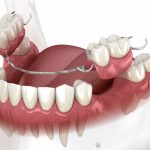Dental anxiety affects millions of adults worldwide, with research showing that 15.3% of adults experience significant levels of dental anxiety, while up to 36% of Americans report some degree of anxiety related to dental visits. Understanding how to get over dental anxiety is crucial for maintaining optimal oral health and overall well-being.
Table of Contents
ToggleUnderstanding Dental Anxiety and Its Impact
Dental anxiety encompasses feelings of worry, fear, or stress associated with dental appointments. This condition ranges from mild unease to severe dental phobia, which affects approximately 6.82% to 7.8% of the adult population. The condition can manifest as physical symptoms, including rapid heartbeat, sweating, nausea, trembling, and, in severe cases, panic attacks.
Common dental fears include fear of pain, needles, drills, loss of control, and the sterile clinical environment. Bad dental experiences can create lasting psychological impacts, sometimes leading to post-traumatic stress disorder (PTSD)-like symptoms.
What Are the Signs and Symptoms of Dental Anxiety?
Understanding the signs of dental anxiety helps individuals recognize when professional intervention may be necessary. Physical symptoms include:
- Heart palpitations or racing heartbeat
- Excessive sweating and trembling
- Nausea and vomiting
- Shortness of breath
- Dizziness or lightheadedness
- Panic attacks when thinking about dental visits
- Muscle tension and physical rigidity
Behavioral indicators encompass avoidance of dental appointments, postponing necessary treatments until experiencing severe pain, and experiencing distress at the mere thought of dental procedures.
Effective Strategies to Overcome Dental Anxiety
1. Cognitive Behavioral Therapy (CBT)
Cognitive behavioral therapy represents the gold standard treatment for severe dental anxiety and phobia.
CBT techniques include:
- Exposure therapy to gradually desensitize patients to dental stimuli
- Cognitive restructuring to identify and modify negative thought patterns
- Systematic desensitization, combining relaxation with gradual exposure
- Applied relaxation techniques for managing anxiety responses
The treatment typically involves 8-10 individual sessions conducted by trained psychologists, often in actual dental settings, to maximize real-world application.
2. Relaxation and Breathing Techniques
Diaphragmatic breathing serves as an accessible, cost-effective method for dental anxiety management. Controlled breathing exercises significantly reduce heart rate, blood pressure, and anxiety levels. The 4-7-8 breathing technique proves particularly effective:
- Inhale deeply through the nose for 4 seconds
- Hold your breath for 7 seconds
- Exhale slowly through the mouth for 8 seconds
- Repeat the cycle 4-6 times
Progressive muscle relaxation (PMR) complements breathing exercises by systematically tensing and releasing muscle groups, promoting deep physical and mental relaxation.
3. Communication with Dental Professionals
Open communication with dental teams significantly reduces anxiety levels. Effective strategies include:
- Discussing anxiety levels before treatment begins
- Establishing hand signals to pause procedures when needed
- Requesting detailed explanations of procedures and equipment
- Asking about sedation options available at the practice
4. Distraction and Visualization Techniques
Distraction methods help redirect attention away from anxiety-provoking stimuli. Effective techniques include:
- Guided imagery involving peaceful, calming scenarios
- Music therapy using headphones during procedures
- Mental counting or word association games
- Positive visualization of successful treatment outcomes
Sedation Dentistry Options to Reduce Dental Anxiety
For individuals experiencing severe dentist anxiety, sedation dentistry provides safe, effective anxiety relief. The American Dental Association endorses various sedation methods as safe and effective when properly administered.
Nitrous Oxide Sedation
Nitrous oxide (laughing gas) represents the most commonly used sedation method in dentistry. This colorless gas with a mild sweet odor provides:
- Rapid onset within 2-3 minutes
- Adjustable levels of sedation throughout treatment
- Quick recovery, allowing normal activities immediately afterward
- Minimal side effects with proper administration
Oral Sedation
Oral sedation involves prescribed medications taken before appointments, providing:
- Moderate to deep relaxation, depending on dosage
- Extended duration suitable for longer procedures
- Amnesia affects reducing memory of treatment
- Flexibility in dosing based on individual needs
Intravenous (IV) Sedation
IV sedation offers the deepest level of conscious sedation, featuring:
- Precise control over sedation levels
- Rapid adjustment during procedures
- Profound relaxation for severe anxiety cases
- Professional monitoring throughout treatment
How to Manage Panic Attacks During Treatment?
For individuals experiencing panic attacks during dental procedures, immediate management strategies include:
During an Attack
- Alert the dental team immediately
- Focus on controlled breathing techniques
- Use grounding techniques (5-4-3-2-1 method)
- Request treatment pause until symptoms subside
- Communicate specific needs to the dental team
Prevention Strategies
- Pre-medication, when prescribed by healthcare providers
- Gradual exposure through preliminary visits
- Relaxation practice before appointments
Addressing Bad Dental Experiences
Bad dental experiences, particularly those involving trauma, require specialized approaches:
Trauma-Informed Care
Trauma-informed dental care recognizes the impact of previous negative experiences and incorporates:
- Patient-centered approaches prioritizing comfort and control
- Modified positioning to reduce vulnerability feelings
- Enhanced communication about each step of treatment
- Flexible pacing allowing breaks as needed
EMDR Therapy
Eye Movement Desensitization and Reprocessing (EMDR) shows effectiveness for trauma-related dental anxiety. Studies indicate that one year after EMDR therapy, most participants successfully undergo dental treatment with significantly reduced anxiety levels.
How to Build Long-term Coping Strategies?
Sustainable overcoming dental anxiety requires comprehensive approaches:
Regular Exposure
- Routine check-ups to maintain familiarity
- Gradual procedure complexity builds confidence over time
- Positive reinforcement, celebrating successful visits
- Consistency with preferred dental providers
Self-Care Practices
- Stress management through regular exercise and relaxation
- Healthy lifestyle habits supporting overall well-being
- Support group participation, connecting with others facing similar challenges
- Professional therapy when anxiety impacts daily functioning
Education and Preparation
- Learning about procedures reduces fear of the unknown
- Technology awareness appreciating advances in patient comfort
- Realistic expectations based on current dental practices
Conclusion
Dental anxiety affects millions of individuals, but effective strategies exist for overcoming dental anxiety and achieving comfortable dental care. From cognitive behavioral therapy and relaxation techniques to sedation options and trauma-informed care, multiple pathways lead to anxiety-free dental experiences. The key lies in recognizing that dental anxiety is treatable, finding qualified professionals who understand anxiety management, and implementing personalized strategies that address individual needs and concerns.
Frequently Asked Quetions
How common is dental anxiety, and am I alone in feeling this way?
Dental anxiety is extremely common, affecting 15-20% of adults. You’re definitely not alone—millions of people experience dentist anxiety, ranging from mild nervousness to severe dental phobia. This condition is so prevalent that most dental professionals are specifically trained to recognize and manage anxious patients with compassion and understanding.
Will sedation dentistry make me unconscious, and is it safe?
No, most forms of sedation dentistry do not make you unconscious. Nitrous oxide and oral sedation keep you awake and responsive but deeply relaxed. You’ll be able to communicate with your dentist throughout the procedure, though you may not remember much afterward. Sedation dentistry is very safe when properly administered—your dentist will review your medical history and monitor you closely during treatment.
Can bad dental experiences from childhood still affect me as an adult?
Absolutely. Research shows that 85% of dental anxiety cases originate from childhood experiences, and traumatic dental experiences can create lasting psychological impacts that persist into adulthood. However, modern dentistry has advanced significantly with improved pain management techniques, gentle approaches, and trauma-informed care specifically designed to help patients overcome dental anxiety stemming from past negative experiences.
What should I look for in a dentist for adults with anxiety?
Look for dental professionals who offer specialized anxiety management services, including sedation options, comfortable environments with amenities like massage chairs or entertainment systems, and staff trained in anxiety recognition. The ideal dentist should demonstrate patience, clear communication about procedures, willingness to pause treatment when needed, and experience working with anxious patients.
How can I prevent panic attacks during dental treatment?
Communicate your anxiety levels with your dental team before treatment begins, practice deep breathing techniques (like the 4-7-8 method), establish hand signals with your dentist to pause procedures when needed, and consider bringing headphones for distraction. If you’re prone to panic attacks, discuss pre-medication options with your dentist or physician, and consider scheduling shorter, more frequent appointments rather than lengthy procedures to build confidence gradually.









